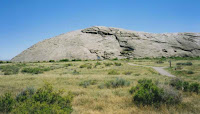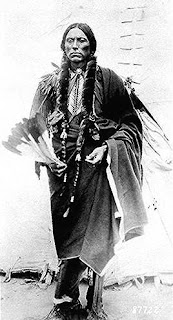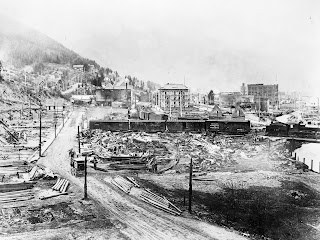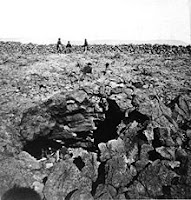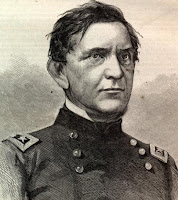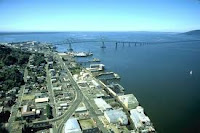The emigrants traveled in a wagon train for a simple reason...safety. The trail from western Missouri to Oregon was wild and untamed country. There was always the danger of attack from hostiles Indians. The army established a line of forts but their troops could not easily be relied on because the distance to the nearest military post could be hundreds of miles. In regards to the wagon trains, excellent remainders of Oregon Trail wagon wheel ruts can still be seen at Lake Guernsey State Historic Park in Wyoming.
 Because the trail was primitive and strewn with rocks there was always the chance of a wagon breaking a wheel or axle so traveling with many others meant there was plenty of assistance. In the evening the wagons would gather in a circle mainly to get some protection from the elements. Many historians contend that the main reason wagons formed a circle at night was for protection against the weather and not necessarily for protection from Indians. They say that although some wagon trains were attacked by hostiles, this was rare.
Because the trail was primitive and strewn with rocks there was always the chance of a wagon breaking a wheel or axle so traveling with many others meant there was plenty of assistance. In the evening the wagons would gather in a circle mainly to get some protection from the elements. Many historians contend that the main reason wagons formed a circle at night was for protection against the weather and not necessarily for protection from Indians. They say that although some wagon trains were attacked by hostiles, this was rare.The cost for a family to travel the Oregon Trail was about $1,000. Add to that the cost of roughly $400 for the wagon. A typical wagon could carry from 2,000 to 2,500 pounds. The wagon train typically would depart Missouri in April. Certain progress had to be made so that the train would not be stranded in the mountains during harsh weather. At mountain altitudes brutal snow storms could hit well before winter.
The authority in the wagon train was the wagon master. You could say he acted as a mayor. He made the decisions that affected the train as a whole. He also hired the scouts. Scouts usually had been traders or trappers and they knew the trails well and knew where to guide the train.
The Oregon Trail had it's end point in the fertile Williamette Valley in Oregon. This valley was and still is Oregon's main population area. It contains most of Oregon's towns and cities and was the site of the first university on the West Coast. The valley was originally inhabited by the British through the Hudson Bay Company. After that it was jointly inhabited by the U.S. and British and eventually only by the U.S. after the 1846 Oregon Treaty. The Clackamah and Kalapuya were the dominant Native Americans in the valley.
See our article with photos of Oregon City, the official end of the Oregon Trail.
If you are planning an Idaho vacation, I would highly recommend a visit to the National Oregon/California Trail Center. This is an interactive museum located in Montpelier, Idaho displaying wagon trains, trading posts and other pioneer attractions. Here you will see and hear and become part of a reenactment of a simulated wagon train journey. Montpelier is located in the Bear Lake Valley in southeastern Idaho. A visit there is definitely a worthwhile history lesson as well as fun for the entire family. You may also find a related short story interesting about the unique "wind wagon", used by Samuel Peppard to travel 500 miles over the Great Plains. Another interesting stop is Independence Rock where many westward emigrants etched their names into the rock.
(Photos are from the public domain)















